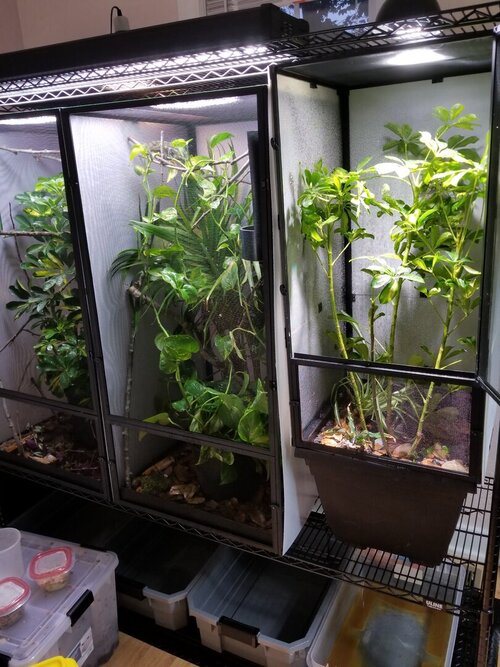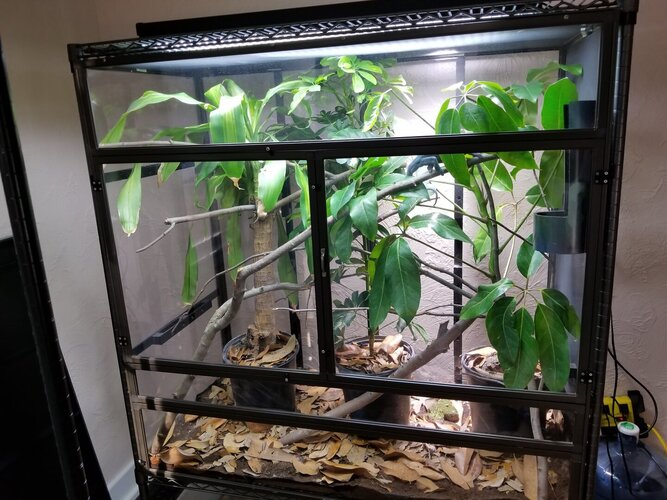jamest0o0
Chameleon Enthusiast
Well, it's an easy word to say, but It overcomplicates everything. If you buy a plant from home depot, you can probably bet that soil is 'bioactive'. I think it would lead to less confusion in the community, there's no magical 'bioactive' vs regular soil. All of the fancy layers are only to encourage plant growth and drainage. Bioactive is simply soil that's had time to establish(as almost any soil you'll come across has unless it's been recently sterilized, which in time will establish again). The thing we want to avoid is only having bark, gravel, rocks, etc which are not conducive to the growth of beneficial bacteria(aerobic bacteria found in all healthy soil). We also want something that can drain water without turning to mud and 'killing' the soil(turning it anaerobic and smelly, easy to tell when this happens). The soil is also a source of nourishment/shelter for the CuC which handle larger waste. You could let the soil itself break down waste safely if for some odd reason you didn't want to add beneficial fauna, but it just takes longer.
Anyone that's been into aquariums, especially saltwater, should have a simple understanding of what it's about.
These are older pics of my 'bioactive' enclosures that I easily set up with a very thin layer of leaves and soil. Did them quickly because I had just moved and needed something set up asap. I kept the plants potted and the water drained out the bottom like a barebottom enclosure would. I had isopods, springtails, and other critters thrive in these set ups just as much as they did in my enclosures with 2 feet of soil. BTW the one on the far right was my female's bio which had to be deeper for egg laying.

Anyone that's been into aquariums, especially saltwater, should have a simple understanding of what it's about.
These are older pics of my 'bioactive' enclosures that I easily set up with a very thin layer of leaves and soil. Did them quickly because I had just moved and needed something set up asap. I kept the plants potted and the water drained out the bottom like a barebottom enclosure would. I had isopods, springtails, and other critters thrive in these set ups just as much as they did in my enclosures with 2 feet of soil. BTW the one on the far right was my female's bio which had to be deeper for egg laying.







